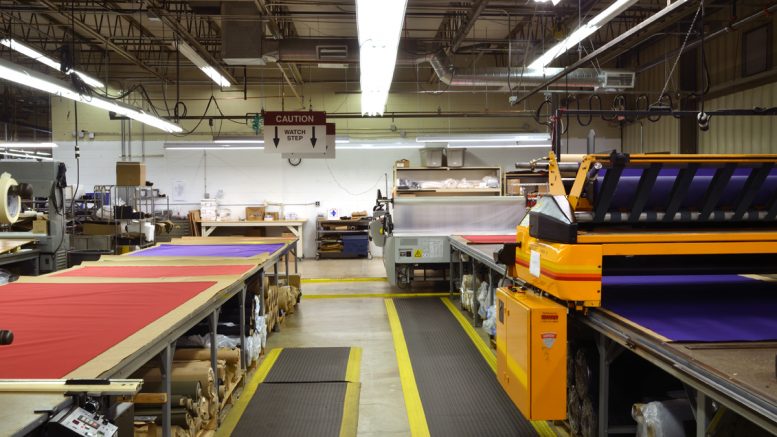While developing a custom carrying case or custom sewn product, durability is almost always the number one factor for sourcing fabrics. Using textiles with high durability is especially important in the medical and military fields where product failure can result in loss of life. While sourcing fabrics, it is beneficial to have knowledge of what qualities you want your end product to have, such as durability or water resistance. The other factor to consider is whether or not you want to use a coated fabric.
What Are Coated Fabrics?
A coated fabric is a fabric that has been treated to enhance certain qualities or apply new ones. Rather than interweaving a strengthening fiber directly into the fabric, these fabrics are coated with a substance that makes the fabrics’ surface more impervious to damage. The most common coating is polyethylene, the most basic plastic compound. Polyethylene has proven durability through its use in the packing industry. Other coatings include rubber and plastic resins, polyvinyl chloride, acrylic, laminates, and PVC.
For more on the materials we offer, click here.
The material used for the coating will also improve customization. At its most basic level, most coatings make the fabric more durable and water resistant. Textile manufacturers have the ability to customize a coat for any fabric to meet a diverse array of needs, ranging from something as simple as mildew resistance to something like fire resistance. This opens up for experimentation and further customization of the durability features that your product has.
Practical Uses of Coated Fabrics
Coated fabrics can also benefit the medical field. For example, using an antimicrobial coating on a fabric can greatly reduce spread of germs. This type of fabric could be used in an EMS carrying case, transport sheet, or a wearable medical device.
With nanotextiles on the horizon, coating will be an invaluable asset for integrating the nanotechnology. This type of technology is still in infancy, but can unlock a whole new world of textile manufacturing. We will eventually have ultra-comfortable waterproof clothing by coating fabric with silicone nanoparticles. Imagine being able to wear your favorite clothes without ever having to worry about spilling anything on them.
We may also be able to see a revival of Ralph Lauren’s fitness tracking polo from 2015. Nanotextiles could open the door for many new avenues for functional fashion and medical wearables. We already have RFID chips sewn into clothing to track when, where, and how products are sold, so the possibilities for improvements are almost limitless (source). Apple Watches have a feature to detect when someone has suffered a fall or car crash (source). So what if we could create shirts that could detect a heart attack, or a stab or gunshot wound? Nanotextiles could be used to help rescue teams find people caught in disasters, or determine who needs help first.
With new and more effective fabric treatments in development, coated fabrics are an excellent choice for projects that need an extra layer of advancement.
To take the first step toward your custom sewn product, click here.

